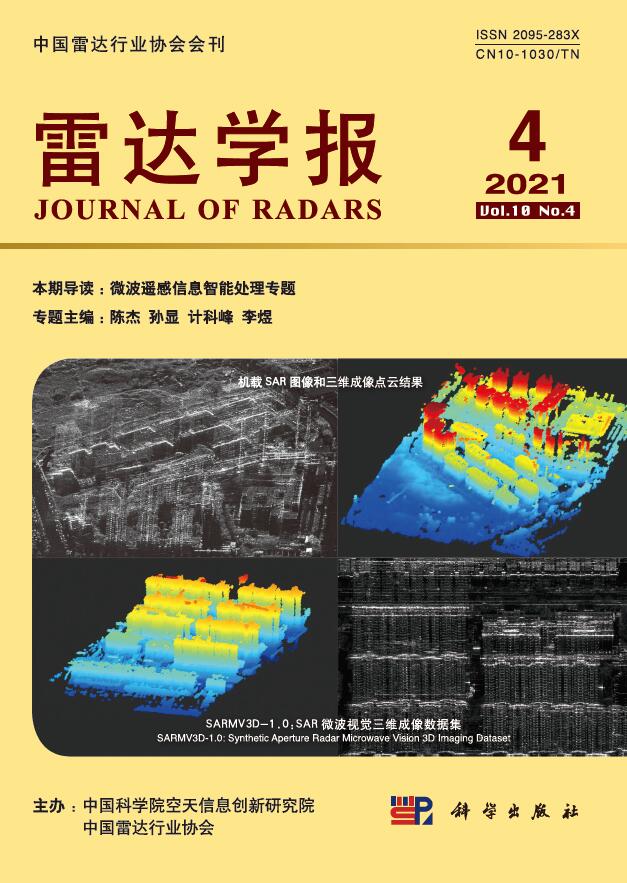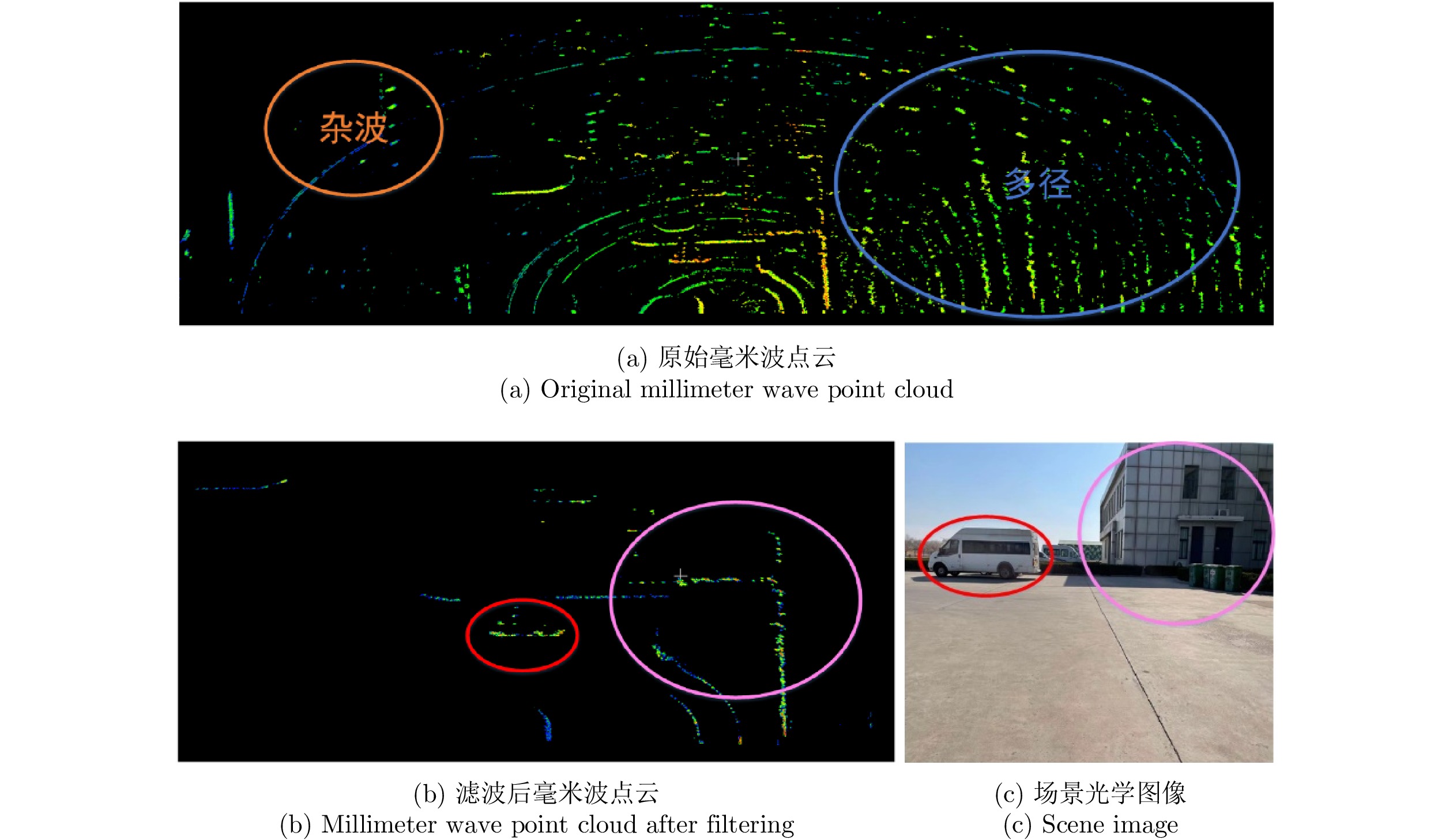| [1] |
李鑫. 面向汽车智能驾驶的毫米波雷达建模与仿真研究[D]. [博士论文], 吉林大学, 2020.
LI Xin. Research on modeling and simulation of millimeter wave radar for vehicle intelligent driving[D]. [Ph. D. dissertation], Jilin University, 2020.
|
| [2] |
MA Xing. Application of several important sensors research on driver-less vehicles[J]. Digital Technology & Application, 2020, 38(5): 107, 109. doi: 10.19695/j.cnki.cn12-1369.2020.05.62 |
| [3] |
崔巍杰. 毫米波和激光雷达数据融合的SLAM算法研究[D]. [硕士论文], 电子科技大学, 2019.
CUI Weijie. SLAM algorithm based on millimeter wave radar and lidar data fusion[D]. [Master dissertation], University of Electronic Science and Technology of China, 2019.
|
| [4] |
YAMAUCHI B. Fusing ultra-wideband radar and lidar for small UGV navigation in all-weather conditions[C]. SPIE 7692, Unmanned Systems Technology XII, Orlando, United States, 2010: 76920O. doi: 10.1117/12.850386. |
| [5] |
FRITSCHE P, KUEPPERS S, BRIESE G, et al. Radar and LiDAR sensorfusion in low visibility environments[C]. The 13th International Conference on Informatics in Control, Automation and Robotics, Lisbon, Portugal, 2016: 30–36. doi: 10.5220/0005960200300036. |
| [6] |
FRITSCHE P, KUEPPERS S, BRIESE G, et al. Fusing LiDAR and radar data to perform SLAM in harsh environments[M]. MADANI K, PEAUCELLE D, and GUSIKHIN O. Informatics in Control, Automation and Robotics. Cham: Springer, 2018: 177–189. doi: 10.1007/978-3-319-55011-4_9. |
| [7] |
FRITSCHE P and WAGNER B. Modeling structure and aerosol concentration with fused radar and LiDAR data in environments with changing visibility[C]. IEEE/RSJ International Conference on Intelligent Robots and Systems (IROS), Vancouver, Canada, 2017: 2685–2690. doi: 10.1109/IROS.2017.8206093. |
| [8] |
PRITSCHE P, ZEISE B, HEMME P, et al. Fusion of radar, LiDAR and thermal information for hazard detection in low visibility environments[C]. 2017 IEEE International Symposium on Safety, Security and Rescue Robotics (SSRR), Shanghai, China, 2017: 96–101. doi: 10.1109/SSRR.2017.8088146. |
| [9] |
MARCK J W, MOHAMOUD A, HOUWEN E V, et al. Indoor radar SLAM a radar application for vision and GPS denied environments[C]. 2013 European Radar Conference, Nuremberg, Germany, 2013: 471–474.
|
| [10] |
PARK Y S, KIM J, and KIM A. Radar localization and mapping for indoor disaster environments via multi-modal registration to prior LiDAR map[C]. 2019 IEEE/RSJ International Conference on Intelligent Robots and Systems (IROS), Macau, China, 2019: 1307–1314. doi: 10.1109/IROS40897.2019.8967633. |
| [11] |
WANG Xiao, XU Linhai, SUN Hongbin, et al. Bionic vision inspired on-road obstacle detection and tracking using radar and visual information[C]. 17th International IEEE Conference on Intelligent Transportation Systems (ITSC), Qingdao, China, 2014: 39–44. doi: 10.1109/ITSC.2014.6957663. |
| [12] |
ALENCAR F A R, ROSERO L A, FILHO C M, et al. Fast metric tracking by detection system: Radar blob and camera fusion[C]. 2015 12th Latin American Robotics Symposium and 2015 3rd Brazilian Symposium on Robotics (LARS-SBR), Uberlandia, Brazil, 2015: 120–125. doi: 10.1109/LARS-SBR.2015.59. |
| [13] |
HAN Siyang, WANG Xiao, XU Linhai, et al. Frontal object perception for Intelligent Vehicles based on radar and camera fusion[C]. 2016 35th Chinese Control Conference (CCC), Chengdu, China, 2016: 4003–4008. doi: 10.1109/ChiCC.2016.7553978. |
| [14] |
KIM J, HAN D S, and SENOUCI B. Radar and vision sensor fusion for object detection in autonomous vehicle surroundings[C]. 2018 Tenth International Conference on Ubiquitous and Future Networks (ICUFN), Prague, Czech Republic, 2018: 76–78. doi: 10.1109/ICUFN.2018.8436959. |
| [15] |
HENG L. Automatic targetless extrinsic calibration of multiple 3D LiDARs and radars[C]. 2020 IEEE/RSJ International Conference on Intelligent Robots and Systems (IROS), Las Vegas, USA, 2020: 10669–10675. doi: 10.1109/IROS45743.2020.9340866. |
| [16] |
QIN Fei, LIU Yunlong, and LIANG Xingdong. A novel GOSD-CFAR for millimeter wave radar detection[C]. 2020 IEEE International Geoscience and Remote Sensing Symposium (IGARSS 2020), Waikoloa, USA, 2020: 1782–1785. doi: 10.1109/IGARSS39084.2020.9324693. |
| [17] |
CRISTIANINI N, SHAWE-TAYLO J, 李国正, 王猛, 曾华军, 译. 支持向量机导论[M]. 北京: 电子工业出版社, 2004: 82–85.
CRISTIANINI N and SHAWE-TAYLO J, LI Guozheng, WANG Meng, and ZENG Huajun. translation. An Introduction to Support Vector Machines and Other Kernel-based Learning Methods[M]. Beijing: Publishing House of Electronics Industry, 2004: 82–85.
|
| [18] |
DANG Xiangwei, RONG Zheng, and LIANG Xingdong. Sensor fusion-based approach to eliminating moving objects for SLAM in dynamic environments[J]. Sensors, 2021, 21(1): 230. doi: 10.3390/s21010230 |
| [19] |
DANG Xiangwei, LIANG Xingdong, LI Yanlei, et al. Moving objects elimination towards enhanced dynamic SLAM fusing LiDAR and mmW-radar[C]. 2020 IEEE MTT-S International Conference on Microwaves for Intelligent Mobility (ICMIM), Linz, Austria, 2020: 1–4. doi: 10.1109/ICMIM48759.2020.9298986. |
| [20] |
ZHANG Ji and SINGH S. Low-drift and real-time lidar odometry and mapping[J]. Autonomous Robots, 2017, 41(2): 401–416. doi: 10.1007/s10514-016-9548-2 |




 Submit Manuscript
Submit Manuscript Peer Review
Peer Review Editor Work
Editor Work





 DownLoad:
DownLoad:











